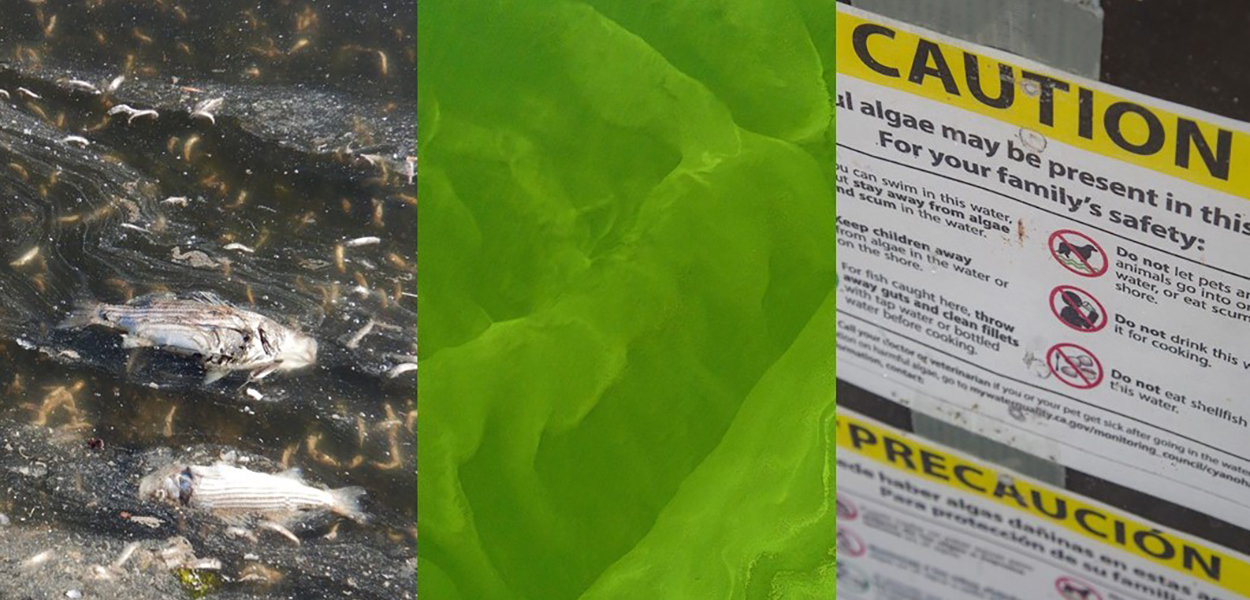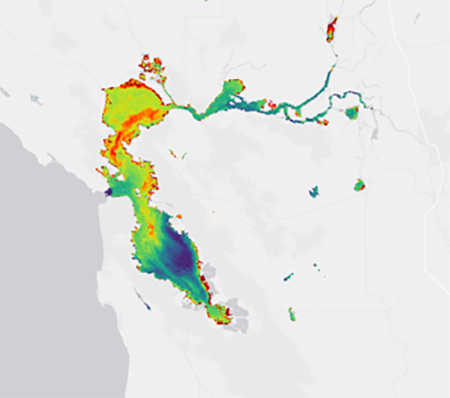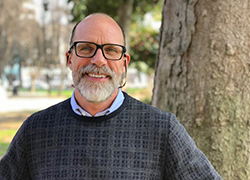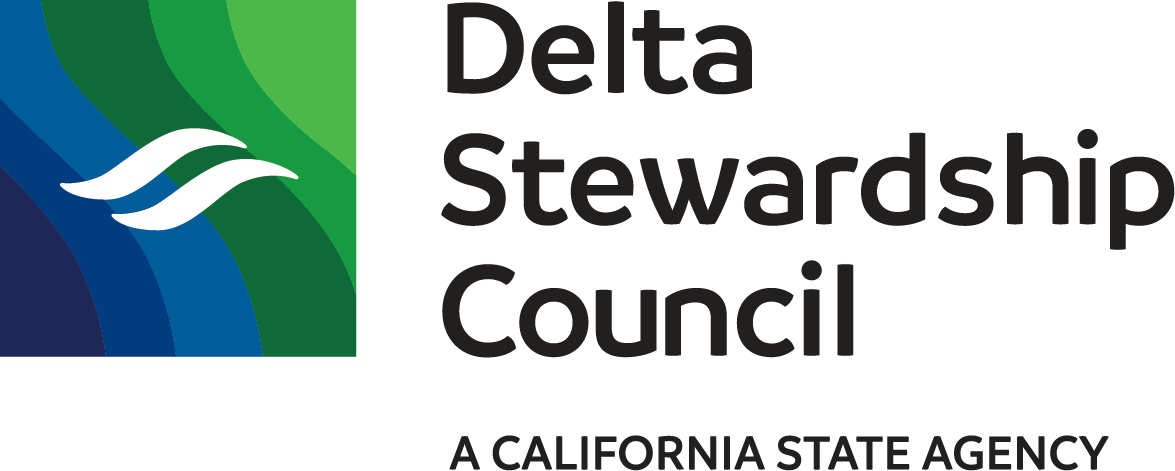
Photo credit: California Department of Water Resources
Digitizing Data: Tracking Harmful Algal Blooms in the San Francisco Estuary
August 17, 2023
By Interagency Ecological Program Lead Scientist Dr. Steve Culberson
Earlier this month, I was working my way through my morning emails and discovered a brief note from one of my Interagency Ecological Program (IEP) colleagues. They had been notified by one of their field crew employees of some higher-than-normal chlorophyll concentrations in their routine water samples from San Pablo Bay (chlorophyll-a is a green plant pigment used to track the presence of phytoplankton in our aquatic systems). These higher-than-normal chlorophyll levels can be associated with harmful algal blooms (HABs) that produce toxins that are dangerous to humans, pets, and fish. HABs were a potential cause of a Bay-Delta Estuary fish kill in Lake Merritt last August. A toxic red tide killed up to 10,000 fish, according to a variety of organizations, including the California Department of Fish and Wildlife.
Ever curious, my colleague quickly searched the internet for ambient water quality status and viewed online the increasingly available data associated with monitoring California’s San Francisco Estuary. This was not something that was easy to do as recently as a year ago, and certainly not five years ago. My Delta Science Program colleague Tricia Lee (who is the point person for nutrient, contaminant, and HAB issues) and I watched with interest as the Bay-Delta stakeholder community rapidly became aware of the more recent water quality “incident,” and began communicating together to track its progress in the Estuary. We were excited to see how increasing public access to water quality information in the Estuary has improved detection, notification, and information sharing regarding the ongoing ecological status in the Bay-Delta system. This is especially fortunate and illustrative since Tricia is currently leading an effort at the Delta Science Program to provide a strategy for improving HAB monitoring even as we work to reliably forecast specific phytoplankton blooms and predict when and where HABs will occur. In a companion blog, Tricia discusses current efforts to create a more cohesive HABs monitoring strategy.

Figure 1. Map of the San Francisco Estuary displaying different concentrations of chlorophyll as different colors taken from remote sensing. The red indicates higher levels and the blue indicates lower levels.
This map is a screenshot of some newly available information (chlorophyll-a data from the San Francisco Estuary Institute [SFEI]) that helped fuel recent conversations about this month’s phytoplankton bloom. The map colors display relative concentrations of chlorophyll-a from low to high, with blue indicating lower levels and red showing higher levels. In this case, a “bloom” is defined as the presence of an area of the Estuary with higher chlorophyll-a concentrations than surrounding areas, or with higher-than-normal background levels of chlorophyll-a compared with a given time of year. While the SFEI HAB satellite tool is still in “beta,” the information displayed prompted several of our colleagues to begin communicating to a broad stakeholder audience regarding the burgeoning event. We tracked several communications via Twitter (or X) indicating that organizations like SF Baykeeper and the IEP were ramping up efforts to follow the event and inform the public about its progression, and potentially, any impacts. There was also communication that any observations of potential fish kills could be rapidly reported and recorded via a recently created page at iNaturalist. We support these efforts and suggest that increased underwriting of and funding for similar communication tools regarding such environmental events is in the best interest of those researching and managing State environmental resources on behalf of our local, regional, and statewide communities.
The number of web sites collecting and displaying environmental and water quality data about our Estuary is expanding rapidly. This is a powerful development in our ability to communicate more clearly and quickly changes we see in the environment in which we live. You can follow the daily chlorophyll concentrations, and thereby the HAB, in the Estuary on fhab.sfei.org, which includes a “Cyano index” layer that shows if any blooms are being caused by cyanobacteria specifically. Additional examples for viewing water quality data include Bay-Delta Live, the San Francisco Estuary Institute, the Regional Water Quality Control Boards in Sacramento and San Francisco, the State Water Resources Control Board, and a statewide data portal curated by the United States Geological Survey.
However, with the expansion of access to, and higher relative ease of visualizing, environmental data, comes an increasing need to develop more nuanced understanding of how the natural world is shifting and adapting to change even as we work to understand or control it. While we applaud the Bay-Delta science stakeholder community’s embrace of online access to what were once difficult-to-find datasets and data analyses, we caution that such ready access also provides an opportunity for quick reaction and conclusion-making that may not be supported after more considered and sober analysis through time. As always, our need for information and decision-support tools may accrue faster than the monitoring programs are able to provide them. However, as in the case of some newly available remote-sensing and visualization technologies like those listed here, we can, at the very least, be aware of ecological events (such as phytoplankton blooms) and provide the Estuary’s decision-makers and managers advice on what we might be seeing as these events unfold.
About the Author

Dr. Steve Culberson
Dr. Steve Culberson is the Lead Scientist for the IEP, a nine-agency consortium of State and federal partners who coordinate and share responsibility for monitoring and interpreting environmental data from the San Francisco Estuary. His position at the Delta Stewardship Council and the Delta Science Program supports an independent, scientific perspective that any of the IEP agency partners can access while pursuing mandated and associated environmental monitoring and data interpretation.
Steve has worked for 30 years in California ecological and management systems and holds a Ph.D. in ecology from the University of California, Davis. His professional focus has ranged from subsistence aquaculture to systems thinking and simulations to science communication and the management/science interface in pursuit of natural resource management. A graduate of Oberlin College in Ohio, Steve dabbles in fitness, poetry, Italian food, and relaxing at home with his wife and their three feline roommates.

